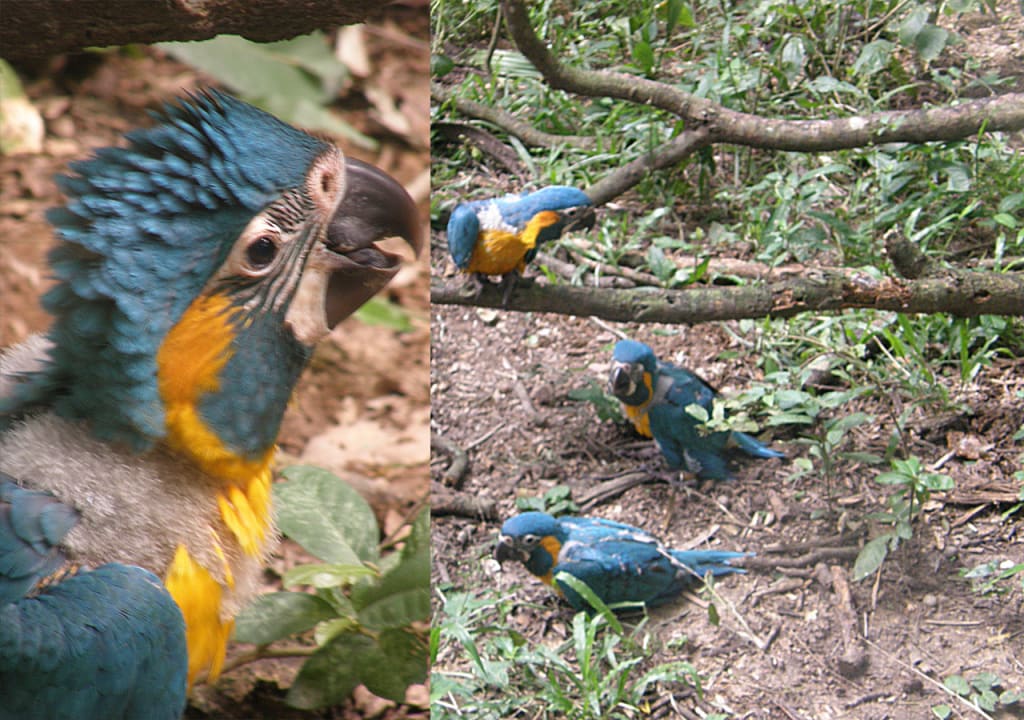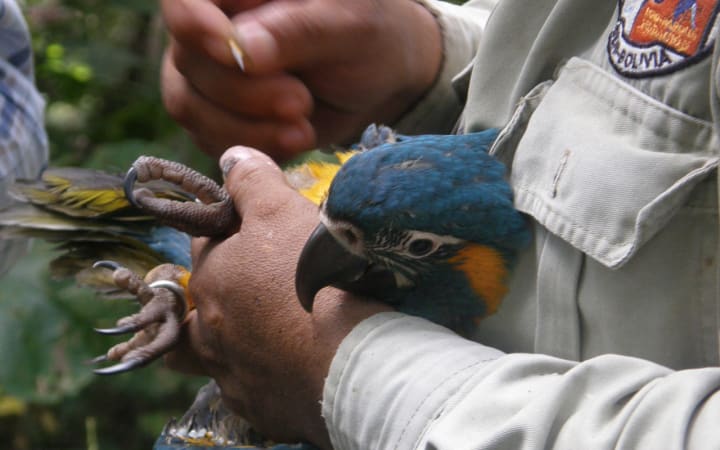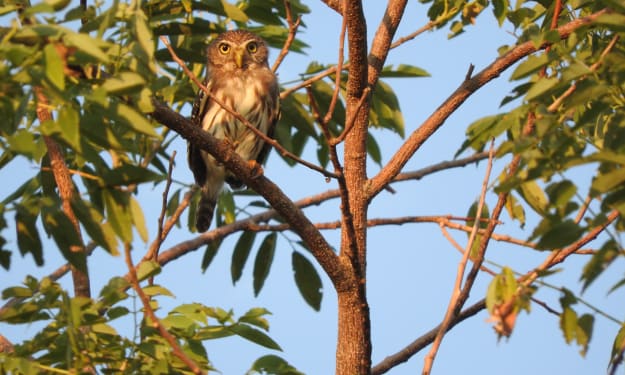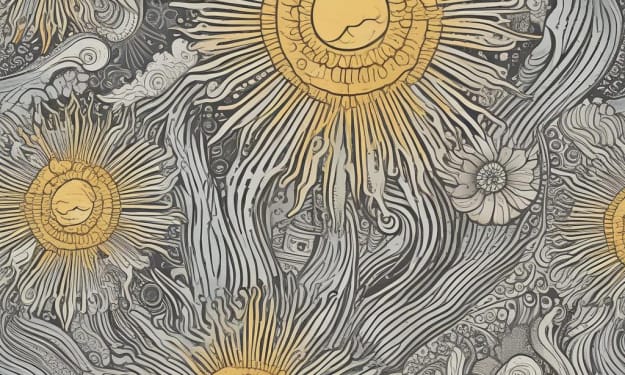Blue-Throated Macaws: A Rediscovered Species
On Endangered Species Day, I think of a bold baby bird I met a decade ago

I often think about how large the world is and how little we know about it. The critically endangered Blue-Throated Macaw (Ara glaucogularis), found only in Bolivia, is a beautiful macaw from hot, humid lowlands prone to regular flooding. For some years, it was thought to be extinct. Or, perhaps, it was thought not to exist at all.
So lost people stopped believing
My 1973 edition of Parrots of the World by Joseph Forshaw and William Cooper gives a beautiful example of how little we knew about these birds less than fifty years ago.
Cooper’s illustration is superb. We see a Blue-Throated Macaw — then called Caninde Macaw (Ara caninde) — next to its cousin, the Blue-and-Gold (Ara ararauna). That’s rather impressive, since he had to work from five museum skins, at least one of questionable origin.
Forshaw’s text is where the trouble begins. Was the bird extinct? Not a real species at all? He doesn’t know, so he hedges his bets by offering three theories:
- It is a valid species that exists — or at least it used to exist before its recent extinction.
- It is a juvenile Blue-and-Gold Macaw. Although pesky captive breeders of Blue-and-Golds were rude enough to point out their juveniles didn’t look like that…
- It is a separate heretofore unsuspected subspecies of Blue-and-Gold Macaw with juveniles that do so look like that.
Obviously, I paraphrase, but less than you might think. And, believe it or not, in 1973, Forshaw prefers this third theory.
“I am not familiar with either ararauna or caninde,” he confesses. (The reader already suspects as much.) “However, I am inclined to treat it as a subspecies of ararauna…In other words, all five specimens [the museum skins known to Forshaw and Cooper at the time] are juveniles.”
Easy for us to laugh almost fifty years later.
He was writing about a species that, had it ever existed, was thought to be extinct. Perhaps a little fumbling is to be expected.

The rediscovery
Beni, Bolivia — the only home of the species — is a department (province) roughly the size of the state of Kansas. The bird’s natural habitat features a hot, humid lowland climate that floods over a wide area for eight months of the year — a climate that tends to keep the human population low.
Still, a Blue-Throated Macaw zipping through the skies is not a small, quiet, or unobtrusive bird. If the species had survived, people should see it.
Well.
I strongly suspect people did see it. However, as far as the scientists were concerned, they had not seen it, and thus was born the myth of the bird’s extinction.
In the end, the bird was rediscovered not by scientists but by trappers working to collect Blue-and-Gold Macaws for the pet trade. The first bird appeared on the market in Europe around1976. Bird breeders noticed the rare macaws and snapped them up. As interest built, more were imported to Europe and the United States — around 175 between 1979 and 1984.
At that point, the wild trade in the critically endangered species was banned. (No one bothered to ban its trade when it was thought to be extinct.)
An article appearing in the February/March 1986 issue of The AFA Watchbird suggests trappers were responding to breeder demands. Scott Riviere, veterinarian Susan Clubb, and Kevin Clubb — at that time three staff members of Last Chance Breeding Farm in Miami — were told the trappers used live callers to pull in birds:
“In capturing macaws, a caller bird is commonly used to lure free-flying birds into trees where snares have been placed…[C]anindes were not captured previous to 1979 because… only blue and gold callers were used…The disproportionate number of male birds entering the U.S. has been attributed to the use of a female caninde caller bird. When the caller bird was changed in late 1983 more female birds became available…”
The Last Chance article goes on to detail a successful captive breeding of their Blue-Throat pair. Worth noting: Dr. Clubb is still active, and she is well known for sharing her knowledge and experience. Her Blue-Throated Macaw information profile is available online at the time of writing.
Other breeders also enjoyed success. At some point, it became clear there were more captive and domestic-bred Blue-Throats than wild ones.
Something had to give. This adaptable bird was well established in captivity. Now it needed to be supported in a way that encouraged its continued existence in the wild.
My encounter with the Blue-Throat
In April 2011, I went to Bolivia to observe the Peach-Fronted Parakeet in its wild environment. This small parrot is also a lowland humid tropical species, but it’s the opposite of rare or difficult to find. To add challenge, the fine folks at Bird Bolivia designed my tour to include three specialty macaws — the endangered Hyacinth and the two critically endangered endemics, the Blue-Throated and the Red-Fronted.
By this time, local observers knew Blue-Throats were struggling to find enough nest cavities to raise their young. Macaws don’t build their own nests. They take over cavities carved out by others, often woodpeckers. Of course, many species compete for these desirable nest holes, including toucans, larger macaws like Blue-and-Golds, and the woodpeckers themselves.
To improve the odds of successful nesting efforts, local conservationists began to provide human-built wooden nest boxes in likely habitat. I visited a ranch near Loreto, where a pair of Blue-Throated Macaws were raising three youngsters in one such box.
Three technicians were on hand to take DNA samples from the young birds. I doubt they chose the day to please the tourist. Rather, the roads had been closed first by flood and then by a political protest. They were destined to arrive when the roads opened whether I did or not.
Be that as it may, I felt fortunate indeed to meet these strong, energetic babies. A note from my diary:
“The first, and rowdiest, most rambunctious of the three babies, was #21. (They have numbers, not names, for tracking purposes.) If you think that a little thing like not being old enough to be out of the nest — he was out of the nest only because the researcher took him out a few minutes to examine him — well, if you think a little thing like the FACTS was going to stop #21 from giving you what-for and letting you know that he was the little big man of the forest, that’s only because you haven’t met #21. This bird has true spirit.”
Even now, a decade later, I often think of the experience of gazing into that baby’s bold eyes. There was no fear for the future, not of me, not of anyone or anything.
"I will survive,” was the vibe I received. “Beyond that, I will thrive.”

A decade of rising hope
The ten years since my visit have seen the Blue-Throated Macaw conservation effort go from strength to strength. The bird that some people argued wasn’t even a species — the bird so forgotten many called it extinct — is now the centerpiece of an amazing scientific and conservation effort.
To hit a few highlights in an amazing decade of progress:
- On the political side, the once little-known bird has become a beloved symbol of Bolivian national pride. In 2014, it was recognized as a natural heritage species. In November 2020, a large area of its habitat, Barba Azul Nature Reserve, was declared a Private Natural Heritage Reserve — the first such reserve created in Bolivia in nine years.
- Wild pairs often breed on cattle ranches, but centuries of logging and ranching have removed the largest trees, leaving them with few choices for nest holes. Fortunately, the artificial nest boxes erected for them are proving to be a success. Indeed, a tradition has been established. In 2017, observers announced the first successful hatching in an artificial nest box from parents who were themselves raised in artificial boxes.
- Multiple expeditions have been mounted to find and identify three major populations. A systematic sampling published in 2020 concluded, “[O]ur findings indicate that [the Blue-Throated Macaw] has a larger population and slightly larger range than previously thought, and that the positive effects of conservation actions are now becoming apparent.”
What a half century it has been — from “maybe extinct or possibly not even real” to “well, at least we can breed a few to save them in captivity” to “amazing example of wildlife management.”

You can read a great deal more about the recovery of this splendid species in Bolivian bird conservation group Armonia’s extensive Blue-Throated Macaw blog.
About the Creator
Amethyst Qu
Seeker, traveler, birder, crystal collector, photographer. I sometimes visit the mysterious side of life. Author of "The Moldavite Message" and "Crystal Magick, Meditation, and Manifestation."
https://linktr.ee/amethystqu







Comments
There are no comments for this story
Be the first to respond and start the conversation.